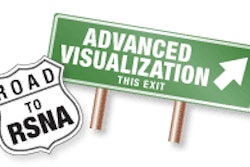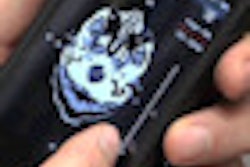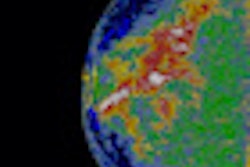Researchers from Carestream Health note that chest x-ray is the most frequently conducted radiography exam, but optimal imaging protocols perhaps are not being used. Previous research indicates that the best kVp level for thoracic soft-tissue features ranges from 60 to 80 kVp and is around 50 kVp for bones.
But the need to mitigate rib contrast and improve contrast-to-noise ratio forces sites to use a protocol of around 120 kVp. The researchers sought to improve upon this through a rib-contrast suppression algorithm developed by Carestream that is designed to improve and maximize lesion conspicuity at the same radiation dose levels.
The researchers tested the algorithm in an anthropomorphic adult chest phantom with simulated 5-mm lung nodules. They measured lesion conspicuity with the observer detectability index, which accounts for lesion contrast and anatomical clutter in the background. Imaging protocols included energy levels of 60, 80, 100, and 120 kVp, with 0- to 0.5-mm copper filtration.
The team assessed the effect of bone suppression on observer detectability index with the algorithm on and off, and determined the optimal imaging protocol by maximizing the index-to-effective-dose ratio. They also had readers grade lesion conspicuity on a five-point scale.
Anatomical detail improved as kVp was lowered, and the optimal imaging protocol was with rib-contrast suppression turned on and x-ray energy set to 80 kVp, according to the group. For nodules behind the ribs, the ratio of observer detectability index to effective dose improved from 2.4 with the conventional protocol (120 kVp, no rib suppression) to 5.4 with the algorithm applied, and it increased further to 6.2 with rib suppression and 80 kVp.
The team concluded that low kVp with a rib suppression algorithm can be used to improve the image quality of chest radiography while keeping dose the same, or dose can be reduced while maintaining the same image quality.



















